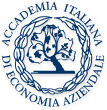Interviews
Change, Project, Knowledge. Symbiosis of change and project management to built a knowledge management system

The 21st century is the age of knowledge-based economy where the real values should be represented by human knowledge and professional skills. Knowledge becomes power and a competitive advantage in an organization if it can be found, unified and made accessible, feasible and applicable to everybody.
Professor Dr. Bencsik from Hungary has been doing research in the fields of knowledge-, change- and project management and she is the author of a number of scientific publications as well as a member of some international scientific committees. Her book entitled Change, project, knowledge shows a generally utilized changing logic extracting those essential elements that get similar importance in the course of building up a learning organizational culture. The utilization of change management logic as a project is indispensable for the successful formation of the corporate knowledge management system.
The book begins with the theoretical bases of management system build-up. It is discussed that most companies have already realized that there is no future without human knowledge but very few can see the technical requirements with which the acquired knowledge can be retained, shared, developed and used. From the point of view of knowledge management the most important factors of organizational culture are trust, communication and learning. Theoretical knowledge and personal experience have proven that the corporate culture has a great influence on the characteristics of knowledge sharing. However, we should not forget that knowledge transfer is not only influenced by the culture of the given organization, but also by the characteristics and customs of the company’s social environment.
In the second chapter with the title ‘Ecce homo’ human reliability and emotional intelligence are focused: they seriously affect the individual’s work and relations within the organization and, consequently, the operation of the whole organization itself. They define the possibility of inter-organisational knowledge transfer, which in turn determines the operation of knowledge management systems. Such important factors are discussed as ‘the team processes and team roles’, ‘the team learning’, ‘the team knowledge’, the team memory’, ‘the insiders and outsiders’, ‘the effectiveness of a group’, and finally the author arrives to the conclusion that professional communities are a unique source for organizations wishing to utilize knowledge because they can provide values for individuals and the organization at the same time and they are equally capable of creating value in the short and the long run.
The chapter three is about the human-centred change management. The author tries to answer the questions as follows: what kind of facts have to be used to handle a successful change? What kind of facts lead to a failure if they are handled negligently? What does change management mean? Strategy, as a motivating factor of change is being highlighted by the author, i.e strategy and structure have to be in a harmony and a culture ensures the background. The strategy is explained as a system of aims and plans which contains flexibility, sensitivity and reactions to unexpected events. In the last decades strategy, strategic leadership and strategic attitude have been highlighted – the idea and its contents have changed significantly. An achievement of recent years is that human resource has become a strategic element. Change management in an organization is a strategic element. If it is realized in the right way with the right managerial viewpoint, it stresses a suitable organizational structure which serves productive and supplying processes. In addition, it stresses the importance of human resources, especially its selection, quality, reliability, etc. It is clear that human resource is not the only necessary element to successful organizational operating, but it has a central role with regard to professional skills and competences. In this section the hypothesis: Building up a change management and a knowledge management system is inseparable and success can be identifiable in both cases by weighing of the analysing grid is proven for all readers.
The last chapter of the book examines the importance of leadership styles and communication from the point of view of human management for building up knowledge management systems that ensure its correspondent operation access, increasing and/or maintenance of competitiveness.
The goal of this book was to show the possibility of building a knowledge management system on the basis of symbiosis between change management and project logic. The preconditions of a knowledge management system are a learning organizational culture and a well-operated system which establish the realization of Probst model elements. According to the logic of this book the reader can follow the exploration of connections among many management methods, tools, and their infiltration to the logic of change and project management. It is true that these methods have been used as independent possibilities for a long time in the areas of business management, but in this book it has been shown that the relations were not revealed earlier. The tasks and points of views to lead change management as a project (on behalf of creating a learning organization) are listed at the end of the book with all the expectations having to be taken into consideration regarding leaders’ behaviour, attitude and activities. Finally, the rich reference list can be useful for students who are interested in management topics.
As this brief summary suggests, this book presents a wealth of new perspectives on and insights into knowledge management and its relations to several aspects of corporate culture making it indispensable reading for professionals. Overall, this book is inspiring material for anyone in the field of management. Also worth noting that the individual chapters themselves are well-structured and the reader has the impression that the book under scrutiny provides entertaining reading.
The major advantage of the book is that it is also useful for managers who want to create and to operate a knowledge management system at a company.
Reviews and Reflections
- Davide Calandra
- Martin Dege
- Irene Strasser








